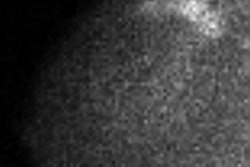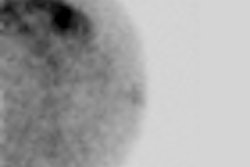CHICAGO - Nuclear medicine modalities show promise for breast cancer screening and diagnosis in women with dense breast tissue, although the various forms are still evolving, RSNA 2011 attendees learned at a Monday morning course.
Nuclear breast imaging refers to everything from positron emission mammography (PEM) to breast-specific gamma imaging (BSGI) to molecular breast imaging (MBI), according to Dr. Wendie Berg, PhD, of the University of Pittsburgh. Berg gave an overview of the modality during the session.
"There is evidence of clinical benefit [for these technologies]," Berg said. "But the development of standardized interpretive criteria is still evolving."
There's a need for standardization and validation, but as of yet, there is no formal rating system (such as mammography's BI-RADS) for nuclear medicine breast imaging, according to Berg.
"The rule of thumb is that if a finding is discrete and visible, it should be considered suspicious, unless it is known to correlate to a benign feature in mammography, ultrasound, or even MRI," she said.
MBI for screening and diagnosis?
In one study presented during the course, Dr. Deborah Rhodes and colleagues from the Mayo Clinic in Rochester, MN, found that low-dose MBI is just as sensitive as conventional-dose MBI in detecting cancers that mammography misses in dense breast tissue.
This particular research built upon previous demonstration studies Rhodes had conducted that showed that adding MBI to screening mammography increased breast cancer detection in dense breasts from 27% with mammography alone to 91% with the combination. But these studies used doses of 20 mCi of technetium-99m sestamibi, and Rhodes' team sought to determine if a lower dose of 8 mCi would still be as effective.
The study cohort included 1,252 women; of these, 15 women had 19 tumors. MBI alone found cancer in 11 of the 15 patients, while mammography alone detected one cancer. Both modalities together found two cancers, and both missed one. Of the 11 mammographically occult cancers found by MBI, four were ductal carcinoma in situ (DCIS), one was tubular carcinoma, four were invasive ductal carcinoma, and two were invasive lobular carcinoma.
As for sensitivity, MBI had a rate of 87%, compared with 20% for mammography and 93% for the two modalities combined. MBI had a 10% recall rate, slightly better than mammography's 11%. And all the MBI-detected cancers were visible on 4 mCi-equivalent images.
"Most of the cancers that were identified on MBI were confirmed by subsequent diagnostic mammography and ultrasound," Rhodes told session attendees.
In a related study, but on the diagnostic side, Dr. Jean Weigert, of the Hospital of Central Connecticut, and colleagues found that BSGI could be helpful in working up indeterminate mammography or ultrasound studies.
"BSGI is recommended when a patient has at least two indications from a list that includes equivocal mammography or sonography results, an unresolved patient concern, a personal history of breast cancer, or palpable masses that are negative at mammography or ultrasound," she said.
Weigert's team compared BSGI with mammography and ultrasound in 1,042 patients who required further diagnostic imaging because of unclear clinical or radiographic findings.
Sensitivity for mammography, ultrasound, and BSGI was 74%, 84%, and 92%, respectively, while specificity was 79%, 61%, and 67%, respectively, suggesting that BSGI is a useful tool to augment mammography in managing patients with difficult to diagnose breast tissue, Weigert said.
"I'm from Connecticut, and we're doing many, many screening ultrasounds now [since the breast density notification law passed in 2009]," she said. "We're finding that BSGI has been very helpful in helping us work up indeterminate studies."
BSGI handles dense breast tissue with ease
In another talk given at the session, Dr. Rachel Brem, from George Washington University Medical Center, presented work that compared the sensitivity of BSGI in both dense and nondense breast tissue. She found that the sensitivity of breast-specific gamma imaging (BSGI) is not affected by breast density.
"As we know, mammography is standard for breast cancer screening, with a sensitivity of 85%. But in dense breast tissue mammography's sensitivity decreases to as low as 48%," she told attendees.
The overall sensitivity of BSGI for breast cancer detection was 95.6%, according to Brem. Of the women in the cohort with nondense breast tissue, 137 (96.5%) of 142 had positive BSGI exams, whereas for the women in the cohort with dense breast tissue, 192 (95.1%) of 202 had positive BSGI examinations -- leading Brem to conclude that there's no difference in the sensitivity of BSGI in women with nondense and dense breasts.
More options, but proceed mindfully
Having more imaging options for screening and diagnosing breast cancer in women with dense breast tissue can only improve clinical care. But there is one key difference between nuclear medicine breast imaging and its conventional cousins that clinicians must be aware of, according to Berg.
"You have to check the injection," she told session attendees. "If the radiopharmaceutical isn't getting into the bloodstream, you're not going to see the cancer."
Finally, nuclear medicine breast imaging users must be sure to compare the results to the patient's current history, Berg said.
"I can't emphasize enough how important it is to correlate nuclear medicine results with a patient's current mammography, ultrasound, biopsy, and pathology history," she said.





















